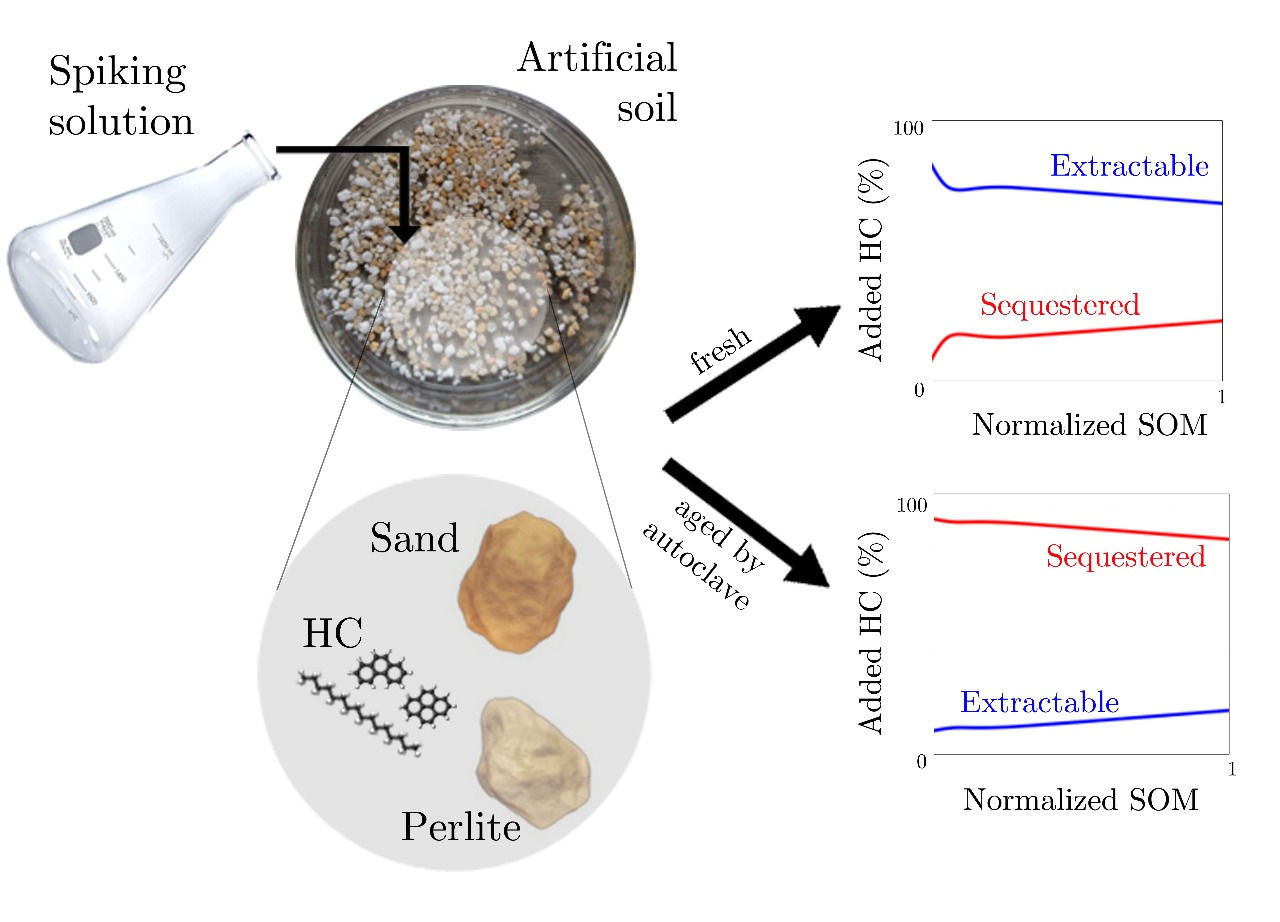 |
|
The fate of polycyclic aromatic hydrocarbons is a major environmental concern that has attracted much attention in current literature. The physicochemical properties of contaminants, along with soil characteristics and ageing, translate into an unusual sorption that leads to high sequestration and low bioavailability. In the present study, fresh (non-sterile) and aged (sterile) synthetic soils (sand-perlite 1:1 v/v) were characterized and spiked (hexadecane, phenanthrene and pyrene 2:1:0.5) to evaluate sequestration extents. Hydrocarbons extraction differed for sand and perlite in fresh samples, on the contrary, the artificial ageing process affected equally the extraction in the synthetic soil components. In the synthetic soil, the extractability of hexadecane and phenanthrene were 80% and 60%, respectively, in fresh samples, but for both hydrocarbons it was only 20% in aged samples. Pyrene extractability was not affected by the components of the synthetic soil or by ageing, and this may be related to an in-situ crystallisation process. The characteristics of the soil and its contaminants, coupled with long-term interactions, significantly modified the PAHs environmental fate, leading to the formation of non-extractable residues, also known as sequestered contaminants. This study expands current knowledge about the fate of these contaminants and should serve as motivation for further experimental and theoretical research on this subject.
Keywords: polycyclic aromatic hydrocarbons, extractability, artificial soil, sequestration, aging.
|
|
 |

